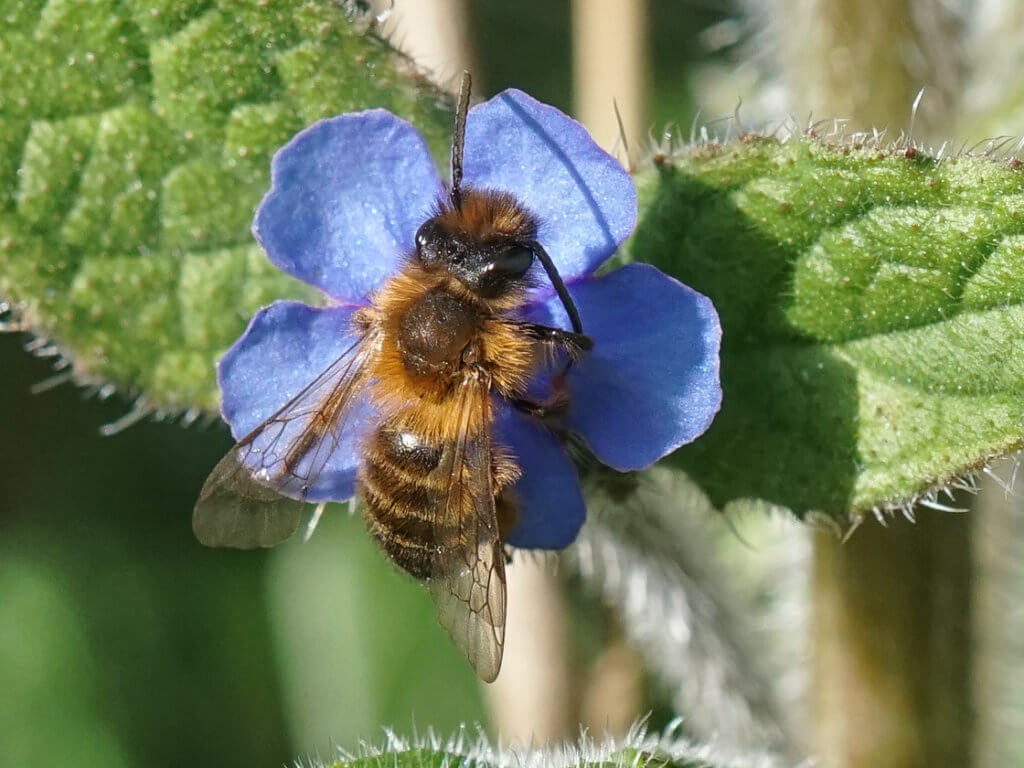
Paul writes: There is a patch of Green alkanet (Pentaglottis sempervirens) that grows on the roadside verge outside my house. It came into flower last week, just at the right time to attract this, recently emerged, male solitary bee.
The Buffish Mining Bee (Andrena nigroaenea) is one of the first mining bees to appear in spring so it’s a species I always look out for. They are one of the commonest mining bees in southern Britain but are scarce in Scotland. Males are smaller than females and lack the long, pollen collecting, hairs on their back legs. The female mining bee nests in sandy soils and excavates a long burrow, then creates a series of cells each with an individual egg. She is clever enough to ensure that the eggs nearest the entrance will become males. The males emerge as adults, feed up on nectar to help get them into breeding condition, then start to establish a territory. All that is left then is to wait for the females to emerge and seek out the same nectar rich flowers. Meanwhile the Green alkanet keeps on flowering through until August, feeding a variety of other bees, wasps and flies.
[registration_form]